Killruddery House (located near Bray, Co Wicklow) features well over 800ac of native forest, picture-perfect gardens and mixed farmland and has been home to the Brabazon family since the year 1618.
The Brabazons have held the Earldom of Meath since that date, as well. Currently, the estate is home to the 15th Earl of Meath, John Brabazon, and his wife Countess Xenia. Their son, Anthony is the Lord Ardee and is married to Fionnuala, Lady Ardee.
Killruddery isn’t just an important historical estate or a stately family home, though – it is a business and community hub with event spaces, a tea room, a farm shop and more.
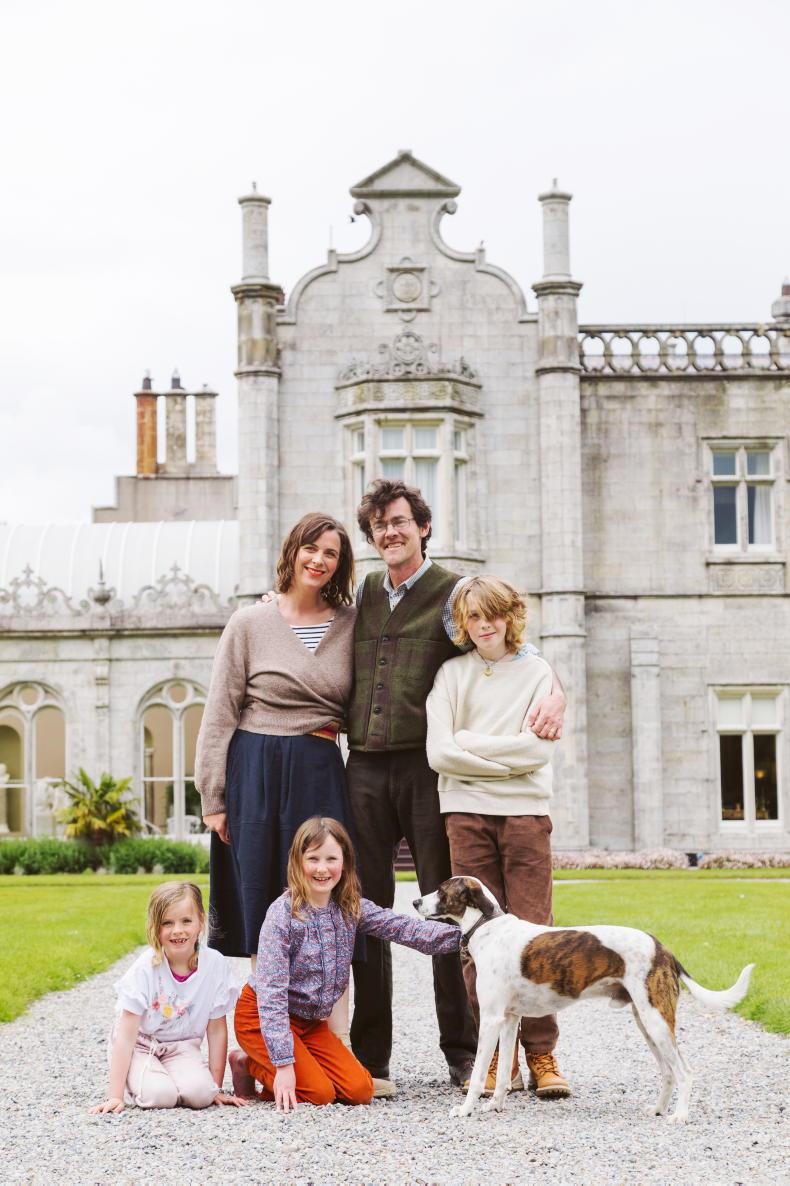
The Brabazon family: Lord Ardee, Anthony, Lady Ardee, Fionnuala, son Aldus (12) and daughters Aileen (eight) and Evelyn (six). Absent is daughter Nora (15) \ Claire Nash
Anthony and Fionnuala are working to make a sustainable living through the farm and the house so they can maintain Killruddery’s history and legacy for future generations.
Making history
The dynamic duo met in the year 2000. Fionnuala grew up in Co Donegal with parents who grew their own vegetables and were, in many ways, self-sufficient.
When Fionnuala and Anthony met, she was studying at the National College of Art and Design and living in a rental apartment with friends.
“I was actually living in a house he was renting out,” Fionnuala explains. “We started hanging out and the rest is history. We married in 2004.”
The Lord and Lady Ardee have four children: Nora, the eldest, who is 15 (she was away at the time of our visit) followed by Aldus (12), Aileen (eight) and Evelyn (six).
“If you can fit it in, Evelyn would like you all to know that she will be seven in 76 days’ time,” laughs Anthony.
He explains some of the changes the house has gone through since his ancestors first took up residence in the 1600s.
“There’s always been a house here but you’ve had a couple of fires and you get the odd remodelling job done,” Anthony says.
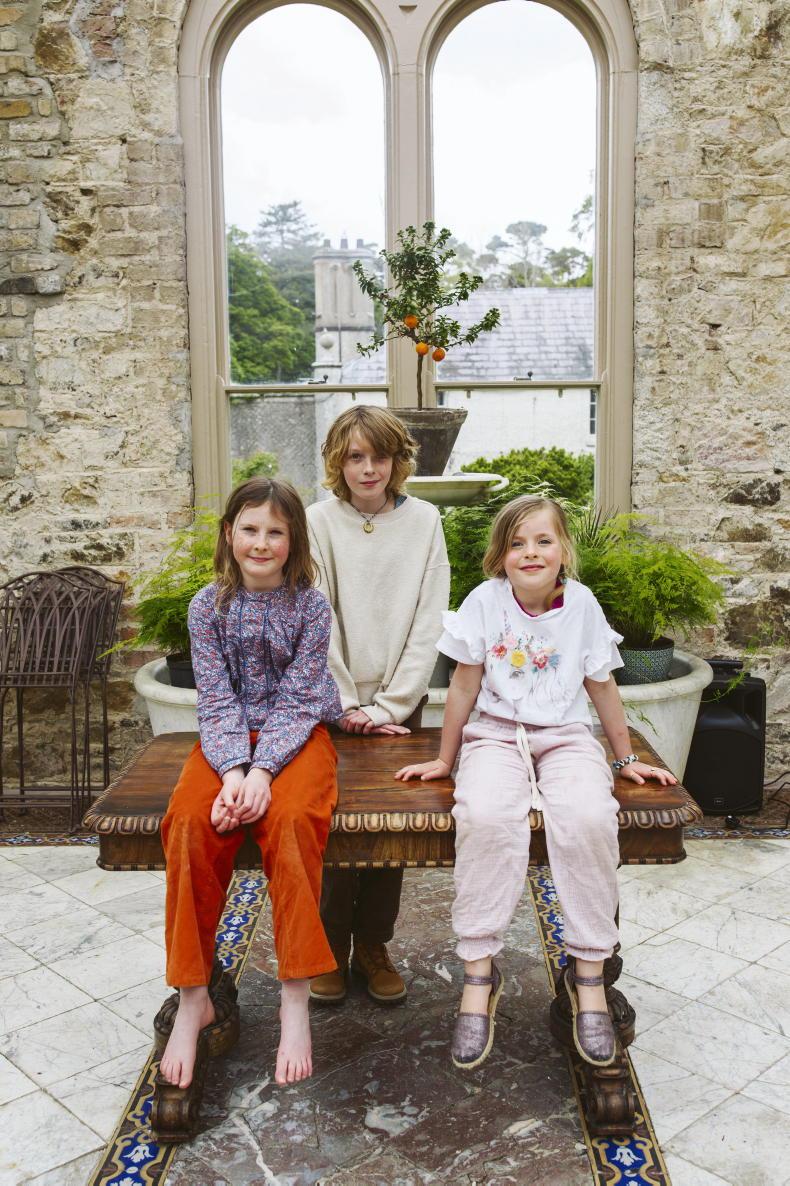
The Brabazon children \ Claire Nash
“So the house you see today was shaped in the 1820s, and then my grandfather knocked half of it down in the 1950s. That’s the modern building we’re in at the moment.”
The estate’s Orangery is one of the newer additions (built in 1854) with a bit of juicy gossip added to its history, for good measure.
It seems the Brabazons, at the time, were only able to afford the design and building of The Orangery by selling one of their precious family tiaras.
It is thought the design of the building itself is fashioned after the tiara, with many decorative, ornate touches throughout.
The farm
Anthony, who also has a background in graphic design, developed an interest in the estate’s farm in his teenage years.
He admits, however, he didn’t actually complete his Green Cert until his mid-20s. They have land in tillage, which is contracted out and they grow vegetables, raise lamb (they have 220 ewes), some beef and pork and have over 400ac in native forestry, which they manage extensively.
“I always helped my uncle and my cousins here in Killruddery doing the harvest,” he says (his uncle originally ran the farm at the estate). “[After getting my Green Cert], I worked for my uncle on the farm then full time for five years. I kind of came to it a bit late.”
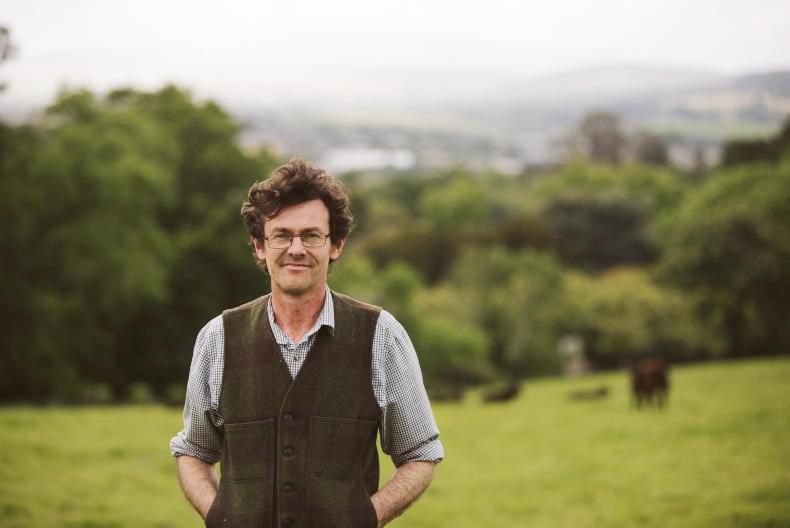
Anthony Brabazon says they are lucky to be able to farm as extensively as they do, considering they supply their own business at Killruddery \ Claire Nash
Currently, the farm is what Anthony calls a “one-man drystock operation,” but the couple have plans to develop the farm to increase their home-grown stock, which they supply to their farm shop and the on-site kitchens.
“We do regenerative; we’re not organic,” he says. “The farm doesn’t really owe anyone anything. It’s gone from being the main source of income on the estate to a less important one, so we can give it a lot less pressure and you can see [the result of that] in the wildlife out there. And you can see it in the produce that gets to the kitchen; it’s fantastic stuff.”
Direct selling
I ask when the estate started making the shift from farming as its main enterprise to the Killruddery House business we see today.
Anthony says it began in 2007-08, and since then the off-farm enterprises have slowly overtaken the farm.
“The farm isn’t producing enough at the right time for the business’ needs, so we have to rethink that, but the best bit is I get to sell the farm produce to my own company for whatever I want,” he laughs.
“The price is based on direct sales in the shop, too,” Fionnuala adds. “There’s a certain tolerance our customers have for price, and then there’s a certain amount they won’t pay, so we have to look at that, as well.”
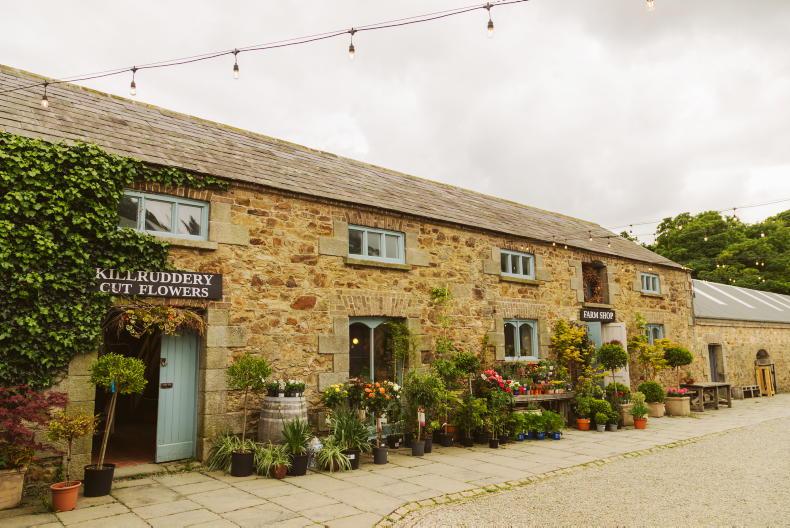
The Farm Shop at Killruddery features produce grown on the family's farm as well as local ingredients from other producers \ Claire Nash
“We know how lucky we are to be able to farm extensively and have the customers to buy our produce,” Anthony says.
“When I started here the farm was it – if my uncle didn’t make the farm work, he couldn’t pay the bills.
With the cost of farming there was always a lot of pressure. We’re just very lucky we have another business to keep the show on the road.”
Food production
Fionnuala and Anthony have plans to expand their vegetable offerings, having recently brought on well-known gardener Dermot Carey to help them sustainably increase production in this area.
Regenerative practises are important to both of them, though as Fionnuala says, they both really have a passion for “sensible farming.”
“Neither of us are hugely idealistic in the way we think farming could be easy; it’s not,” she says.
“We want to move into fields of vegetables, as opposed to arable crops, and – possibly - if we’re continuing to do cereals on the estate it would be for the restaurant or the shop.
We’re trying to get as directly to the consumer as possible.
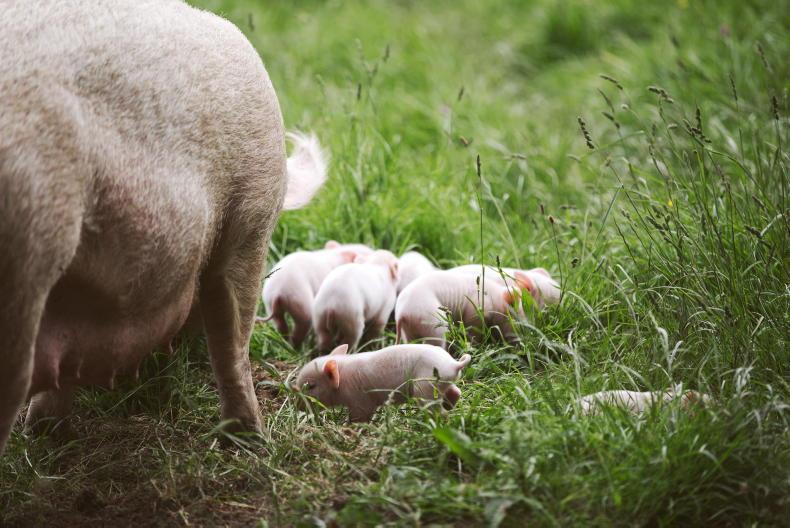
Anthony says his children love being on the farm when the animals have their young \ Claire Nash
“We’re very aware, from a farming perspective, of how lucky we are to be able to work directly with consumers,” she continues.
“We’re interested in being a centre for other farmers - to be a space at which to sell and access consumers who want to buy [regeneratively grown] produce.”
She also notes that they are lucky in their location; being so close to Dublin and to the client base looking for these types of foods.
Eggs in baskets
I ask if weddings and events are a large portion of the business they do and whether all of these different enterprises enable the upkeep of the historic building and grounds.
“Weddings and events are quite a big bit [of the business], but they’re not a crucial bit,” Anthony says.
“We have eggs in all sorts of baskets here and you could see during the pandemic that the fact that we had no weddings or corporate events didn’t change our turnover at all, because we actually had more people coming to visit.

The Brabazon Family have lived at Killruddery House since 1618 \ Claire Nash
“The business hasn’t gotten to the maintenance to the historic property yet but it will do,” he continues.
“It’s heading the right way - and that has been the plan all along: to make the business operations support the maintenance of the house and gardens, so we didn’t feel like we were passing on a huge burden to the next generation.
I think it will be another year or two before that comes to pass, hopefully, but it’s heading in the right direction.”
Balancing act
It must be a completely different childhood experience, not just to grow up in a stately, historic home, but a home which is also largely open to the public.
I ask Anthony and Fionnuala if their children get involved during events and how they manage to juggle house, farm and family.
“The kids gets involved when they need to and their parents disappear at odd times for an hour or two when we need to go work,” Anthony says.
“We take time off and spend quality time together, but you have to physically leave - get in the car and head off somewhere!”
“We try to always set up our business to work on a daily basis without us,” Fionnuala says. “Which works better sometimes than other times, but it is all about the people who you work with.”
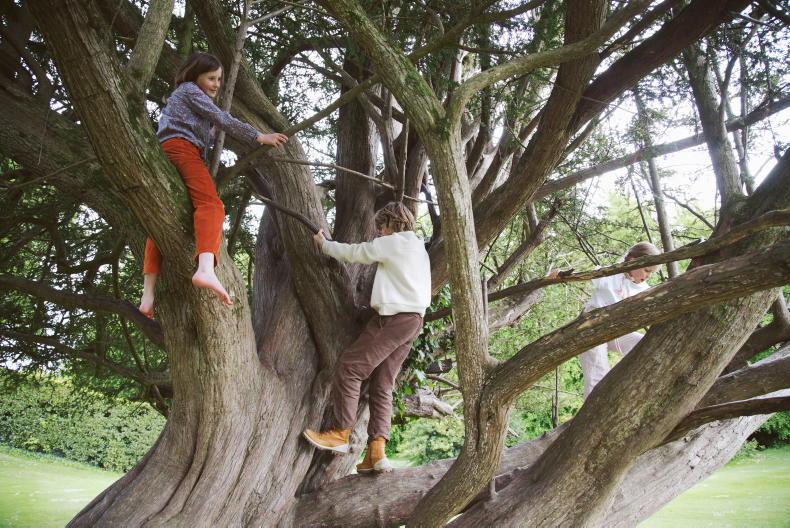
It's a different kind of childhood to grow up in such an historic home, but the Brabazon children make the most of their big backyard \ Claire Nash
Joseph Young, Artist in Residence at Killruddery, has launched an audio trail he calls ‘The Ancestors’: His latest residency project takes the archives, architecture and grounds of Killruddery as its starting point to uncover unheard and forgotten stories of Anglo-Irish social histories, through an immersive audio tour. Privately launched 30 June, this is now available for public viewing.
Sketching in the Garden with Yanny Petters: On 24th July in The Orangery, this workshop with botanical artist Yanny Petters will help attendees develop their own nature sketch book to record their gardens or take visual notes.
Wild Food with Nádúr Collective: On 11 September, attendees can learn how to forage with Killruddery’s Head Chef Niall O’Sullivan and fellow founder of Nádúr Collective, Paul Quinn, to identify, collect, discuss and eat wild plants found within the estate.
For more visit killruddery.com
Read more
Celebrating Pride: the Kildare couple who operate online eco-business Faerly.ie
Tradition with a touch of spice
Killruddery House (located near Bray, Co Wicklow) features well over 800ac of native forest, picture-perfect gardens and mixed farmland and has been home to the Brabazon family since the year 1618.
The Brabazons have held the Earldom of Meath since that date, as well. Currently, the estate is home to the 15th Earl of Meath, John Brabazon, and his wife Countess Xenia. Their son, Anthony is the Lord Ardee and is married to Fionnuala, Lady Ardee.
Killruddery isn’t just an important historical estate or a stately family home, though – it is a business and community hub with event spaces, a tea room, a farm shop and more.

The Brabazon family: Lord Ardee, Anthony, Lady Ardee, Fionnuala, son Aldus (12) and daughters Aileen (eight) and Evelyn (six). Absent is daughter Nora (15) \ Claire Nash
Anthony and Fionnuala are working to make a sustainable living through the farm and the house so they can maintain Killruddery’s history and legacy for future generations.
Making history
The dynamic duo met in the year 2000. Fionnuala grew up in Co Donegal with parents who grew their own vegetables and were, in many ways, self-sufficient.
When Fionnuala and Anthony met, she was studying at the National College of Art and Design and living in a rental apartment with friends.
“I was actually living in a house he was renting out,” Fionnuala explains. “We started hanging out and the rest is history. We married in 2004.”
The Lord and Lady Ardee have four children: Nora, the eldest, who is 15 (she was away at the time of our visit) followed by Aldus (12), Aileen (eight) and Evelyn (six).
“If you can fit it in, Evelyn would like you all to know that she will be seven in 76 days’ time,” laughs Anthony.
He explains some of the changes the house has gone through since his ancestors first took up residence in the 1600s.
“There’s always been a house here but you’ve had a couple of fires and you get the odd remodelling job done,” Anthony says.

The Brabazon children \ Claire Nash
“So the house you see today was shaped in the 1820s, and then my grandfather knocked half of it down in the 1950s. That’s the modern building we’re in at the moment.”
The estate’s Orangery is one of the newer additions (built in 1854) with a bit of juicy gossip added to its history, for good measure.
It seems the Brabazons, at the time, were only able to afford the design and building of The Orangery by selling one of their precious family tiaras.
It is thought the design of the building itself is fashioned after the tiara, with many decorative, ornate touches throughout.
The farm
Anthony, who also has a background in graphic design, developed an interest in the estate’s farm in his teenage years.
He admits, however, he didn’t actually complete his Green Cert until his mid-20s. They have land in tillage, which is contracted out and they grow vegetables, raise lamb (they have 220 ewes), some beef and pork and have over 400ac in native forestry, which they manage extensively.
“I always helped my uncle and my cousins here in Killruddery doing the harvest,” he says (his uncle originally ran the farm at the estate). “[After getting my Green Cert], I worked for my uncle on the farm then full time for five years. I kind of came to it a bit late.”

Anthony Brabazon says they are lucky to be able to farm as extensively as they do, considering they supply their own business at Killruddery \ Claire Nash
Currently, the farm is what Anthony calls a “one-man drystock operation,” but the couple have plans to develop the farm to increase their home-grown stock, which they supply to their farm shop and the on-site kitchens.
“We do regenerative; we’re not organic,” he says. “The farm doesn’t really owe anyone anything. It’s gone from being the main source of income on the estate to a less important one, so we can give it a lot less pressure and you can see [the result of that] in the wildlife out there. And you can see it in the produce that gets to the kitchen; it’s fantastic stuff.”
Direct selling
I ask when the estate started making the shift from farming as its main enterprise to the Killruddery House business we see today.
Anthony says it began in 2007-08, and since then the off-farm enterprises have slowly overtaken the farm.
“The farm isn’t producing enough at the right time for the business’ needs, so we have to rethink that, but the best bit is I get to sell the farm produce to my own company for whatever I want,” he laughs.
“The price is based on direct sales in the shop, too,” Fionnuala adds. “There’s a certain tolerance our customers have for price, and then there’s a certain amount they won’t pay, so we have to look at that, as well.”

The Farm Shop at Killruddery features produce grown on the family's farm as well as local ingredients from other producers \ Claire Nash
“We know how lucky we are to be able to farm extensively and have the customers to buy our produce,” Anthony says.
“When I started here the farm was it – if my uncle didn’t make the farm work, he couldn’t pay the bills.
With the cost of farming there was always a lot of pressure. We’re just very lucky we have another business to keep the show on the road.”
Food production
Fionnuala and Anthony have plans to expand their vegetable offerings, having recently brought on well-known gardener Dermot Carey to help them sustainably increase production in this area.
Regenerative practises are important to both of them, though as Fionnuala says, they both really have a passion for “sensible farming.”
“Neither of us are hugely idealistic in the way we think farming could be easy; it’s not,” she says.
“We want to move into fields of vegetables, as opposed to arable crops, and – possibly - if we’re continuing to do cereals on the estate it would be for the restaurant or the shop.
We’re trying to get as directly to the consumer as possible.

Anthony says his children love being on the farm when the animals have their young \ Claire Nash
“We’re very aware, from a farming perspective, of how lucky we are to be able to work directly with consumers,” she continues.
“We’re interested in being a centre for other farmers - to be a space at which to sell and access consumers who want to buy [regeneratively grown] produce.”
She also notes that they are lucky in their location; being so close to Dublin and to the client base looking for these types of foods.
Eggs in baskets
I ask if weddings and events are a large portion of the business they do and whether all of these different enterprises enable the upkeep of the historic building and grounds.
“Weddings and events are quite a big bit [of the business], but they’re not a crucial bit,” Anthony says.
“We have eggs in all sorts of baskets here and you could see during the pandemic that the fact that we had no weddings or corporate events didn’t change our turnover at all, because we actually had more people coming to visit.

The Brabazon Family have lived at Killruddery House since 1618 \ Claire Nash
“The business hasn’t gotten to the maintenance to the historic property yet but it will do,” he continues.
“It’s heading the right way - and that has been the plan all along: to make the business operations support the maintenance of the house and gardens, so we didn’t feel like we were passing on a huge burden to the next generation.
I think it will be another year or two before that comes to pass, hopefully, but it’s heading in the right direction.”
Balancing act
It must be a completely different childhood experience, not just to grow up in a stately, historic home, but a home which is also largely open to the public.
I ask Anthony and Fionnuala if their children get involved during events and how they manage to juggle house, farm and family.
“The kids gets involved when they need to and their parents disappear at odd times for an hour or two when we need to go work,” Anthony says.
“We take time off and spend quality time together, but you have to physically leave - get in the car and head off somewhere!”
“We try to always set up our business to work on a daily basis without us,” Fionnuala says. “Which works better sometimes than other times, but it is all about the people who you work with.”

It's a different kind of childhood to grow up in such an historic home, but the Brabazon children make the most of their big backyard \ Claire Nash
Joseph Young, Artist in Residence at Killruddery, has launched an audio trail he calls ‘The Ancestors’: His latest residency project takes the archives, architecture and grounds of Killruddery as its starting point to uncover unheard and forgotten stories of Anglo-Irish social histories, through an immersive audio tour. Privately launched 30 June, this is now available for public viewing.
Sketching in the Garden with Yanny Petters: On 24th July in The Orangery, this workshop with botanical artist Yanny Petters will help attendees develop their own nature sketch book to record their gardens or take visual notes.
Wild Food with Nádúr Collective: On 11 September, attendees can learn how to forage with Killruddery’s Head Chef Niall O’Sullivan and fellow founder of Nádúr Collective, Paul Quinn, to identify, collect, discuss and eat wild plants found within the estate.
For more visit killruddery.com
Read more
Celebrating Pride: the Kildare couple who operate online eco-business Faerly.ie
Tradition with a touch of spice













 This is a subscriber-only article
This is a subscriber-only article










SHARING OPTIONS: